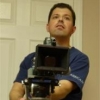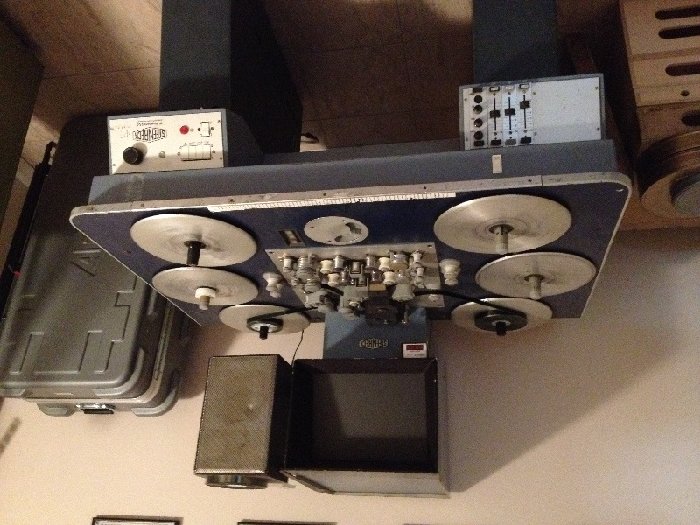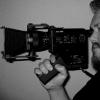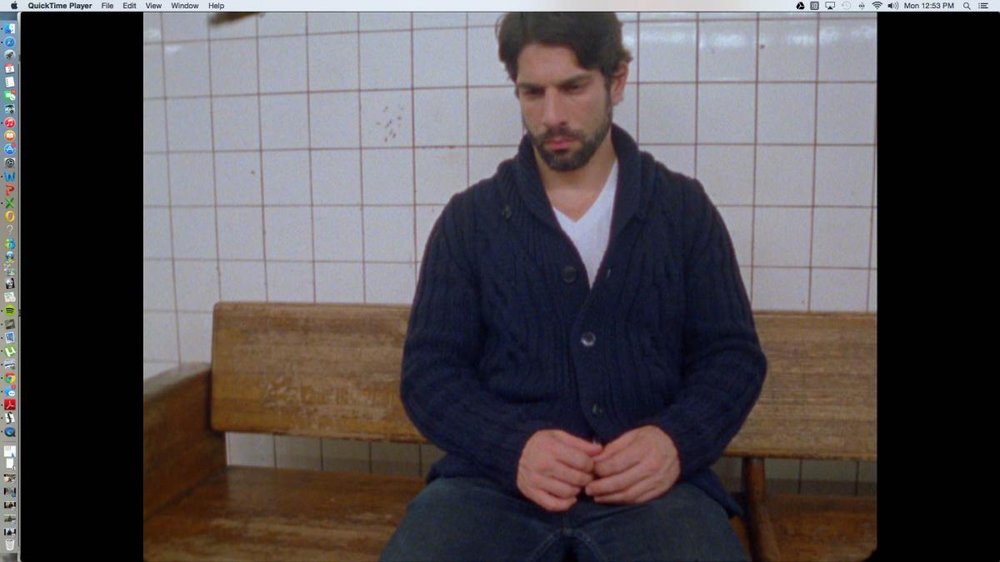Search the Community
Showing results for tags 'film'.
-
My question is partly technical, and partly just a curiosity: When shooting digitally, has anyone noticed a difference between shooting 23.976, and straight 24.00 FPS. I know this is the nearly negligible difference, but these are two different rates of capture. is there any perceptive change in how it feels or the way movement is perceived? Just some context: shooting a film with some folks that are used to shooting film. The project in mind will end up with some sort of theatrical release however it'll obviously be shot, finished and watched all digitally. If this isn't being printed to film, does NOT shooting 23.98 create an enormous post headache? Final question, is any of this worth exploring?
-
Hey! We're looking for a DP based in London UK to work on a micro budget road movie (Set in the US) that will be shot on Andromeda DVX100, with Elite Letus 35mm adaptor. If the budget allows then we will be shooting on Aaton XTR, S16mm film, or combination of both. Synopsis and more info here: Awaken The Giant Within At the moment we're looking for the right DP and we want to, soon, start shooting some tests. You must have experience on micro/low budget productions and be based in London, UK. If you are interested please send an email with the following details: Cv, camera/tech skills, showreel. Email: info@volitionmedia.co.uk. Cheers
-
Hello, I'm considering about buying my own 35mm film camera. Pardon if this is a common topic on this forum, but I'd like to get some advice from people wiser than me. The rational reason for owning a 35mm camera would be the duration of the film projects. Because we're not at a professional level and everyone has another job or goes to school, the filming schedule is rather irregular and long. I figured that a rent of 2 months would buy me half of my own camera and anyway at least I would like to make more projects than just one. The lenses would be rental however because they are very expensive and one usually needs more than just one focal length or model. The cameras I'm considering are the following: Moviecam Compact Moviecam SL Arricam ST The Moviecams are about 5000$ and the Arricam ST is 12000£ (a rental house is the seller). Do these sound like fair prices? Is Visual Products a reliable seller (seller of the Moviecams)? To the main point: What I'm looking for is a reliable basic sync sound 35mm camera which is not too heavy for shoulder operation. I would be expecting a couple ten years (or more) of service life. The Arricam would probably be the best choice, as Arri still services them and accessories like mags can be rented from the local rental house for it but the price of the camera is rather high for me. So are the Moviecams a good option? I know that the Moviecams and Arricams both have practically the same movements, but I heard that the electronics of the Moviecams are inferior. However what is unclear to me is that are the electronics of the Moviecams just less sophisticated or really of inferior design or build quality? Also I believe getting a Moviecam serviced can prove to be difficult. Out of the Moviecams the SL would probably be the better choice as it's a bit newer and smaller. But I heard that the body wouldn't be so rigid and thus prone to light leaks. Is this true? Also, is the extra noise (compared to a Compact or ST) a problem when dialogue is recorded while filming? Sorry for the bit lengthy text, but I would appreciate any advice (but please don't try to sell me digital - it's just not the same). Thank you very much for any help and information. Regards, Valter
- 19 replies
-
As I'm about to start cutting my 16mm short, I just wanted to share two pictures that will most likely seem pretty retro but, nonetheless, cool B) Finally put the rewind table together yesterday. And below it is my Steenbeck.
-
I just purchased a Kodak Instamatic M6 from ebay. It arrived in excellent condition, but was not working (the seller did not say it WOULD work) anyway I checked to make sure all the contacts were clean on the battery compartment, and the cartridge compartment looked decent...all in all it looked like it was in great shape. I opened up the auto exposure control battery part and there was only one battery in it and the battery was corroded a bit, so i removed it cleaned out the compartment and left the battery out. (I am going to buy the necessary two replacement batteries for the auto exposure control) The trigger pushed in, but the motor did not sound as if it were running. i pushed it several times but to no avail. (i think i heard the motor run for a split second twice, but nothing else) my friend looked onver the camera with me and we sprayed some contact cleaner on the regular battery contacts just to make sure. the trigger still did nothing. I held the camera up to my ear and heard a low sort of vibration, as if something completed a circuit inside the camera, but i did not push the trigger in...it was doing this by itself. I took the batteries out and it stopped. I came here and saw a forum post of someone having a similar issue and the replies suggested that the trigger may be "stuck" on or defective, or that the drive shaft gear is not working...because its neoprene and probably has broken because the camera is so old. FINALLY, after all that explanation my question is essentially what should I do now? I have a couple cartridges of film so i could pop one in and see if that works (but i dont see how that would change the trigger) or should i try and take it apart and clean the contact with the trigger, or is it the gear....or basically what are my options.
-
Hi I'm recently posted for a DP now we're looking to crew-up in several more positions. The project is happening this summer between mid july to mid august tentative dates. Postions: Gaffer's, Grips, Sound recordyst (with own gear), editor's with feature film experience (must be able to handle and 4k and 6k footage, red code. If helps if you are located in Maryland, DC, VA but not necessary. Send resumes, reels, contact info to dvpauditions@gmail.com
-
So one day I was bored and I decided to shoot a film all by myself, which meant acting and I'm not that good at it
-
I got my scanner project working today, still lots of things to figure out but... Maybe the roughest and coolest scanner ever ;) And yes, I can transfer 35mm film in 4K. somewhat B) http://aapolettinen.blogspot.fi/2015/05/making-film-scanner-out-of-konvas-camera.html
-
Hi, I am a student at Birmingham City University and am gathering some primary research. I am currently writing a short thesis on the idea that film production is moving towards large budget TV series productions such as House of Cards, Breaking Bad and Gotham. This could mainly be due to the way consumers receive their media content online. With the substantial transfer from cinema and TV spectatorship to online streaming and distributors such Netflix and Sky. I wondering whether people agreed there is a significant change from film production to high profile TV Productions in relation to the consumers move towards online distributors such as Netflix? Many thanks, Auberon
-
We shot some key pieces of this short film using super 8mm. It was pretty seamless but helped add to the effect that you were watching someones real home movies: http://redd.it/34bi0f
-
Dear Cinematography Community, Was hoping to get some good feedback on the style of shooting and feedback on the cuts. Please let me know your thoughts, as I am trying to pitch this new concept to the general public. I shot and cut this for a motion picture composer and want to make sure it has a cinematic feel: Thank you, Shaun Khan Aim Higher http://www.fd1.com
-
- Aerial Cinematography
- Cinematography
- (and 3 more)
-
Hi, I have some auctions here for some film equipment, on the relevant auctions any serious offers considered either here or through Ebay. Thanks for looking :) Iscorama 54 anamorphic lens with Diopter shooting kit http://www.ebay.co.uk/itm/331532291304?ssPageName=STRK:MESELX:IT&_trksid=p3984.m1555.l2649 Schneider Xenon 25mm F/0.95 lens http://www.ebay.co.uk/itm/331532314535?ssPageName=STRK:MESELX:IT&_trksid=p3984.m1555.l2649 ANGENIEUX 5.9mm F/1.8 Wide angle c-mount Lens http://www.ebay.co.uk/itm/331532325296?ssPageName=STRK:MESELX:IT&_trksid=p3984.m1555.l2649 Nizo Professional http://www.ebay.co.uk/itm/331528562246?ssPageName=STRK:MESELX:IT&_trksid=p3984.m1555.l2649
-
Litepanels Unveils New ASTRA 1x1 EP and 1x1 E Series
Sue Smith posted a topic in Cinematography News
Next Generation ASTRA 1x1 Series Also Expands with New Models CHATSWORTH, Calif., (April 9, 2015 )--Litepanels® , a Vitec Group brand and premier provider of LED lighting for the broadcast and production industries, has announced the launch of several new additions to their highly acclaimed ASTRA line of LED panels. The expanded lineup now includes the ASTRA 1x1 EP series, the ASTRA 1x1 E series, and two additional models in the ASTRA 1x1 series, which debuted last year. Building on the legacy of the company's original, trailblazing 1x1 fixture, the ASTRAs set a new standard for the form and function of professional LED panels. ASTRA 1x1 EP Series: Ideally suited for independent and field production, the ASTRA 1x1 EP panels offer a light output that is two times brighter than the company's legacy 1x1 fixture. Featuring the Litepanels tradition of a one square foot form factor, the LED panels offer high CRI (Color Rendering Index). The new ASTRA 1x1 EP series includes both Daylight and tunable Bi-Color models. ASTRA 1x1 E Series: The ASTRA 1x1 E series offers entry-level access to Litepanels' state-of-the-art LED panels. Every design element has been meticulously crafted to deliver the form and function needed for the independent content creator. The new ASTRA 1x1 E series also includes Daylight and tunable Bi-Color models, and offers a light output that is comparable to earlier LED panels. With high CRI and a traditional form factor, the new series provides efficiency and versatility at an affordable price point. ASTRA 1x1 Series: To better complement studio operations, the ASTRA 1x1 series has been expanded to include ASTRA 1x1 Daylight and ASTRA 1x1 Tungsten fixtures. Joining the ASTRA 1x1 Bi-Color panel, these fixtures offer a light output that is four times brighter than Litepanels' original 1x1. For studio installations, a full lineup of accessories is available. In addition to studio use, the intensity levels in these battery-powered fixtures make the ASTRA 1x1s ideal for location shooting, especially in direct sunlight. "The response the filmmaking community had to the launch of the ASTRA 1x1 Bi-Color panel last year exceeded our expectations," said Alan Ipakchian, product marketing manager for Litepanels. "The time, effort, research and development put into the ASTRA has produced a panel that once again revolutionizes the use of LED fixtures for the creation of professional content. We've created expansions to the line that offer a variety of intensity levels and price points, making the ASTRA available to everyone. Whatever your requirement, Litepanels has the perfect fixture to fit your needs and budget. And with the modular approach we've taken, your gear, accessories and lighting style can grow with you." All of the ASTRA panels are designed with select premium quality surface mount LEDs that are paired with custom designed TIR (total internal reflection) optics. Both the new 1x1 EP and 1x1 E series offer a Bi-Color fixture, allowing users to adjust color from daylight to tungsten as needed. An internal microprocessor monitors the temperature and delivers smooth dimming from 100 percent to zero with no noticeable color shift, as well as ensuring a completely flicker-free performance at any frame rate or shutter angle. "At Litepanels, we're always striving to deliver for filmmakers," noted Ipakchian. "With the introduction of the new ASTRAs, Litepanels is bringing the most advanced LED technology available to content creators in all segments of the industry. Once people get their hands on these panels - which are sturdy, high-output fixtures packaged in a lightweight, flexible form factor - they're not going to want to light without them." The new ASTRA series employ a modern, modular design. The manual controls are ergonomically designed to allow for ease of use in the field, ensuring easy identification and manipulation of dimming controls, color controls, and power status. The panels are all produced with aluminum I-beam core construction to provide maximum durability and superior thermal management, and also feature strong, integrated aluminum accessory mounting points and lens/filter rails. All ASTRA fixtures offer an extensive list of features, including a curved yoke design with a wide tilt range, dual integrated cable guides, and a combination yoke mounted power supply with a 3-pin XLR locking power connector and optional Gold Mount® or V-Mount battery plates. The yoke also features a removable TVMP connector and additional 1/4-20 mounting points. The ASTRA 1x1, ASTRA 1x1 EP and ASTRA 1x1 E series have taken the place of Litepanels' original 1x1 panels, introduced almost a decade ago, and are now available worldwide. The ASTRA family of products was specifically crafted to meet the needs and price points of users in every sector of the market. The ASTRA EP series starts at $900 (£558), while the ASTRA 1x1 E Daylight is available at the low list price of $665 (£412). The ASTRA 1x1 Bi-Color panel has a list price of $1,500 (£930). For more detailed sales information, please visit http://store.litepanels.com/. More information on Litepanels can be found at www.litepanels.com or follow us on Facebook. -
NAB 2015, Booth #C6025 Advanced Battery Safety Technology and Asset Tracking for the Digital Age Added to Latest Releases of Revolutionary Series SHELTON, CT (March 25, 2015) - Anton/Bauer®, a Vitec Group brand and premier provider of battery, charging and monitoring technologies for the broadcast, film and video industries, will be showcasing important new additions to its Digital Battery and Performance Charger Series at NAB 2015. Anton/Bauer's ground-breaking Digital Battery Series, first introduced at NAB 2014, redefines the power standard for a new generation of cameras and auxiliary equipment, while the Performance Charger Series exceeds the high-efficiency standards required by today's rigorous shooting schedules. Anton/Bauer's latest innovations in battery safety technology and cloud-based asset tracking will be demonstrated at their exhibit (booth #C6025) at NAB 2015 in Las Vegas, which runs April 13-16. With production safety at the forefront of the industry's agenda, Anton/Bauer has updated its Digital Battery Series with Fuse Link technology, a new connection technology that vendors developed as a result of Tesla Motors' research efforts. Fuse Link technology provides an added protection circuit within each cell pack, prohibiting damage to adjoining cells if a single cell is affected for any reason by severe impact, puncture or thermal runaway. "The safety of our users is the top priority at Anton/Bauer," says Neal Laneville, Product Manager of Mobile Power for the company. "Our Lithium-Ion Digital Batteries are the safest on the market, and they've undergone a rigorous process of research, design and testing to achieve it. We felt the developments in Fuse Link technology were significant enough to include in our design. If there's any incident with one of the cells, Fuse Link reacts like a giant fuse, isolating that single cell from the rest of the pack. We constantly strive to incorporate the latest technology into our batteries so our customers can handle them without any concern for their own safety or that of their team." Anton/Bauer will also be previewing their new Asset Management System (AMS) at NAB 2015. Heralding a new era of digital asset tracking, the cloud-based AMS is a game changer in the area of fleet management. "The cumbersome tasks associated with battery fleet management will soon be a thing of the past," notes Laneville. "Rental houses, broadcast studios, and news affiliates will be able to track the status of their batteries right from their computers." With Anton/Bauer's AMS, an asset's essential information, including remaining run-time, temperature, voltage, and present capacity, will be just a click away. When an Anton/Bauer battery is placed on a Wi-Fi enabled Performance Charger, the AMS will automatically upload its information to a secure, cloud-based server. All pertinent data required for tracking and performance analysis will be available with a simple user log-in and password. "We're looking forward to demonstrating the important features we've added to our Digital Battery and Performance Charger series at NAB," concludes Laneville. "Safety is obviously of the utmost concern, and increased efficiencies are vital to our customers. There are huge developments continuing in Lithium-Ion technology, and we're looking forward to delivering all of those benefits to our customers." The Digital Battery Series includes three battery sizes (90 Wh, 150 Wh, and 190 Wh), all with Anton/Bauer's high-quality cells that deliver a long performance life. The Digital Battery and Performance Charger Series are now available in both Anton/Bauer's signature Gold Mount® and in V-Mount. Anton/Bauer's Asset Management System will be available to the marketplace as a tier-based subscription in the third quarter of 2015. For more information, visit www.antonbauer.com or call (800) 422-3473.
-
Hi! So I am new to the world of 16mm... I may well be the only student at my Uni shooting 16mm. I haven't shot much yet, but am eager to learn! This will be the summer of 16 for me! I bought a box of cans of 100' expired color Fuji 500D (from mid to late 90s guessing). I am planning on rating it at around 120 or so... But what is everyone's reccomended method of testing a roll? Shooting a annotated test card at several settings, then clipping that footage (Maybe 1 minute long?) and sending it to a lab would be my guess. From the lab tech perspective, what should I ask for in terms of processing this test? A flat pass? How to send the footage? In a 35mm still film container? I want to make this easy and hassle free for all involved. Basically, I want to know what to rate the film at and if there is streaking. Later on, the lab and I can decide to correct (or to amplify....) odd coloring, so I am not worried about that part. Any advice is appreciated. I am so excited my fingers are tingling!
-
So as a project for high school some friends and I are going to shot a short on Super 8. I am planing on purchasing Kodak's 7266 Tri-X and I've been looking into developing it. I know that I can send it to get developed at Pro8mm or CineLab but if it's reasonable I'd like to try home developing. I've see a number of different ways in my research. I know the basic process of developing the film twice and bleaching it in the middle. I've read that I could just use D-76 for developing. But I've also read that I should use KODAK B&W Reversal First Developer Starter. I've read the instructions for using the Developer Starter and it sounded like it includes everything someone needs. But when I was looking into it more someone had posted saying I would needed to buy some other products. Also I've heard that you can use coffee as developer but I didn't really look into that. So I could use some advice is there a good way to do home developing, if so what do I need and what is the specific formulas for mixing. Or would it just be better to mail it in and if so what service would you suggest.
- 16 replies
-
Super 8 kit for sale. All carefully serviced, film tested, with clear lenses and in fully working, near mint condition. Minolta XL-84 - £149.99 (RL button intentionally removed) Canon AF514XL-S - £124.99 Canon 514XL-S + 43mm C8 wide lens - £99.99 Sankyo XL-620 - £99.99 Sankyo XL-420 - £74.99 Bolex Aspheron 4mm (55mm thread) Wide Lens - £34.99 Canon 43mm C8 wide lens - £49.99 Canon 67mm C8 wide lens - £99.99 Prices in GB Pounds Sterling. Based in London UK. billrodgersfilms@hotmail.com
-
BURBANK, Calif. (March 10, 2015) - FotoKem's restoration of Twentieth Century Fox's The Sound of Music will kick off the sixth annual TCM Classic Film Festival on March 26 in Hollywood. Originally released in 1965, the re-mastered version of this cinematic treasure will grace the screen of the TCL Chinese Theater IMAX as the fest's Opening Night Film, as previously announced by TCM. The movie's stars - Julie Andrews and Christopher Plummer - will be on hand to introduce the film, along with Turner Classic Movies host Robert Osborne. Directed by Robert Wise and photographed by Ted D. McCord, ASC, The Sound of Music earned five Oscars® for Best Picture, Director, Sound, Editing and Score. The Rodgers & Hammerstein musical tells the true story of a nun (Andrews) who leaves the convent to serve as governess at the nearby Von Trapp household, where she falls in love with Captain Von Trapp (Plummer) and the family encounters dangers and eventual triumph in Nazi-era Austria. This marks the second consecutive year that a movie restored by FotoKem has opened the TCM Classic Film Festival. Last year, Twentieth Century Fox's Oklahoma! was unveiled for attendees. FotoKem completed the restoration of both 65mm classics through 8K scans from large-format film elements, down-sampled to 4K for restoration and digital cinema mastering. "The popularity of The Sound of Music is in part a testament to the power of 65mm capture," says Schawn Belston, Executive Vice President, Media and Library Services at Twentieth Century Fox, who supervised the restoration. "FotoKem's 8K scanning and complimentary digital post resulted in a stunning digital version of this timeless classic, and made our new 4K restorations of The Sound of Music and Oklahoma! a perfect fit for the opening night screening slot at a festival as prestigious as TCM's." FotoKem, which provides digital workflow and creative finishing solutions, and continues to operate one of the last motion picture laboratories in the United States, has been providing skillful restoration and preservation services for decades. Their expertise in the entire post production process makes the facility uniquely positioned to restore and deliver 65mm sourced images to today's audiences. "We're honored to have been entrusted with the job of digitizing and restoring the The Sound of Music," says FotoKem's Andrew Oran. "This 50-year-old film comes alive today in a whole new way - with a vividness and emotional impact that arguably exceeds even its original release - because of its 65mm pedigree, and the great care we've taken throughout the post process to honor that unique, ultra-high quality source." For the restoration of The Sound of Music, Oran and his team began by creating the highest quality 65mm intermediate film components possible on the facility's re-engineered 65mm contact printers. Next, those film elements were digitized at 8K on the 65mm IMAGICA scanner. FotoKem colorist Mark Griffith mastered the film from re-scaled 4K files, utilizing powerful digital tools to address quality issues present in the sourced material, such as flicker and variable color fading. "At FotoKem, we employ many of these same restoration tools and techniques on 65mm originated images week in and week out for new Hollywood features, giant screen documentaries, and theme park attractions," adds Oran. "Working with 65mm requires precision, whether the images are new or old. Whatever the vintage, we consider it our duty to retain the intentions of the original filmmakers." FotoKem is a sponsor of the 2015 TCM Classic Film Festival, which runs March 26-29. The golden anniversary of the film's premiere launched March 2 in the UK, and March 10 in the U.S. with the release of the 5-disc Ultimate Collector's Edition 50th Anniversary Blu-ray/DVD/Digital HD, which features over 13 hours of bonus content. Additionally, through a Fox partnership with Fathom Events and Turner Classic Movies, the restored film will also be shown for two days only, April 19 and 22, in over 500 theatres across the U.S. For more information about FotoKem, visit www.fotokem.com. For details about the TCM Classic Film Festival, go to http://filmfestival.tcm.com.
-
- Fotokem
- restoration
- (and 5 more)
-
Can bolex be converted to super 16? If so, which models? Also, can bolexes be outfitted for crystal sync/ electric motor? Just curious, thanks.
-
Hello, INFO: 1) I shot some R16mm/S16mm tests and had a telecine at two different labs. The R16 was done at Lab 1 and the S16 at Lab 2 (also a second telecine of the same R16 footage was done at the same lab, Lab 1.) 2) All the stills are shot in the exact same location. Meter: F1.2 and on 7219 3) The S16 is shot at F2 with a 9.5mm Zeiss Super Speed Prime 4) the R16 stills were both shot at F1.3 with a 16mm Zeiss Super Speed Prime. Shots: R16 Lab 1 (Tele 1) R16 Lab 1 (Tele 2) S16 Lab 2 Questions: 1) Why does the S16 image seem to have so much more light than the R16 images when it is actually closed a full stop down (F2 vs F1.3)? (Again the R16 was done at lab 1 and the S16 at lab 2) 2) Why is the S16 image much more green and then the two R16 images so different from one another, (one is redder and the other white, same footage)? How are these choices made at the lab? 3) Finally, based on the meter reading of 1.2 and the 7219, does one process/lab stick out as more accurate as far as exposure, obviously the more light the better. Could lab 1 have under processed? Could lab 2 have over processed? I assume they have the same processing times. But how do I know what I am going to get? needless to say I need some adepts here as this is pretty confusing I appreciate your time thank you
-
Hi all, I have recently been trying to practice loading film into a super 16mm modified krasnogorsk k3 and am coming up against some odd problems. Firstly I was not the one who performed the modification and the loop formers are removed. From what I understand this is to stop the film from getting scratched. When loading the film and feeding it through everything seems to be fine at first and I run off a good few feet to make sure it is going through okay. But then once the lid goes on and I press the trigger the film immediately jams. Here is a video of the issue. https://www.youtube.com/watch?v=HGuALakdNQY Can anyone make sense of this? Regards, Josh
-
Hi guys. Selling my lovely TOBIN TCS TXM-22A Crystal Sync Motor for Arriflex 16s. Bought from Du-All Cameras 2 years ago. never used, only tested recently, working like a charm. Asking price: US$ 900 (Paid US$ 995, receipt as proof). Can ship worldwide. Item is in Brazil. Can declare small value to avoid customs. Shipment costs is around US$ 60, ETA 2 weeks by normal postage. Can ship UPS if you'd like. Will post pictures here soon. Any questions, just shout. *** PLEASE CHECK MY 2 ARRI 16S KITS FOR SELL ON EBAY: http://www.ebay.co.uk/itm/2-ARRI-16S-ARRIFLEX-KITS-FULLY-WORKING-PRISTINE-CONDITION-/171665355148?#shpCntId
-
Hello all, This is my first post to the forum and I'm glad to be here. I am an undergrad cinematography major and I will be shooting my first show on 35mm. Naturally, a gear head will be best for our studio work, but I have only worked as an assistant with the equipment. A few operators and DoPs have told me that tracing a circle on the wall with a laser pointer is a good way to start out. Does anyone have any recommendations on how I can practice? I'll have just the prep day and the test shoot day to figure out the muscle memory. (Unless I should just settle with a fluid head?) Thanks for your time in advance, -Jeremy
- 28 replies
-
- gearhead
- panavision
-
(and 3 more)
Tagged with:
-
Hi! We are looking for a Camblock operator who loves adventure and cinematography for a documentary we will be shooting in Baja (California) in a few weeks. We will be down there for a couple of weeks and its a paid gig. We're based in LA. Please contact georgina@usc.edu if interested. Best, Georgina



















